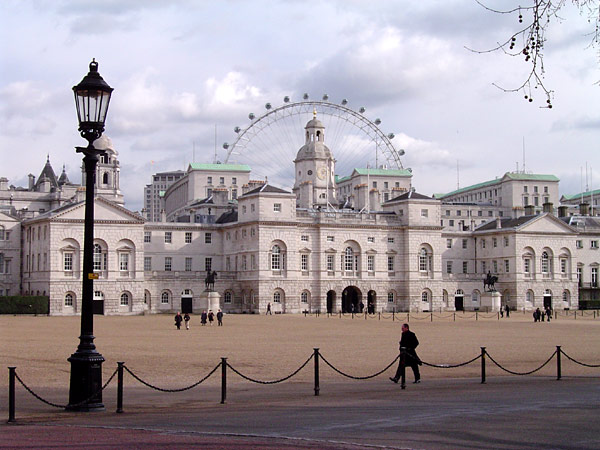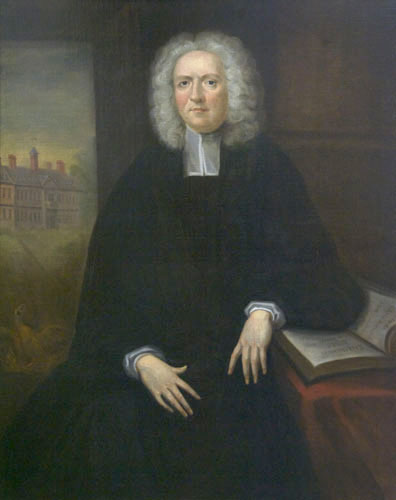|
1700 In Architecture
The year 1700 in architecture involved some significant events. Events * March 27 – François de Rohan, prince de Soubise, buys the Hôtel de Clisson, which is subsequently remodelled by Pierre-Alexis Delamair. * A new facade is built on the Cathedral Basilica of St. Peter Apostle at Frascati, Italy. Buildings and structures Buildings completed * Brown House, Rehoboth, Massachusetts, USA * Castillo de San Pedro de la Roca, Santiago de Cuba (begun 1638), by Giovanni Battista Antonelli * DeWint House, Tappan, New York, USA, by Daniel DeClark * Federal Hall, New York City * Hill Court Manor, Ross-on-Wye, England * Rossie House, Angus, Scotland, by Alexander Edward * Slushko Palace, Vilnius, Lithuania (begun c.1690), by Giovanni Pietro Perti * Tessin Palace, Stockholm (begun 1694), by Nicodemus Tessin the Younger * Upper Chapel, Sheffield, England, by followers of Timothy Jollie * Wren Building, College of William & Mary, Williamsburg, Virginia, USA (begun 1695) Bir ... [...More Info...] [...Related Items...] OR: [Wikipedia] [Google] [Baidu] |
Giovanni Pietro Perti
Giovanni Pietro Perti or Peretti (1648 – 1714) was an Italian Baroque sculptor and architect, regarded as one of the leading European sculptors on the verge of the 18th century. He has been an elder of Šnipiškės and Antakalnis suburbs governed by Sapiehas. Living in Canton Ticino, Perti, as a sculptor of ''comasco school'', was influenced by an Italian master Gian Lorenzo Bernini. Educated in Florence and invited to Vilnius by Michał Kazimierz Pac, Perti has spent most of his life in the capital of the Grand Duchy of Lithuania working for magnate families. He became famous for the stucco decorations of St. Peter and St. Paul's Church (1677–82), considered the Lithuanian Baroque masterpiece. He worked together with Giovanni Maria Galli who added the ornamentations around sculptures by Perti. Perti served in the manor of the Grand Hetman of Lithuania Jan Kazimierz Sapieha the Younger from 1689 until 1701 During his career Perti has designed, constructed and decorated s ... [...More Info...] [...Related Items...] OR: [Wikipedia] [Google] [Baidu] |
1753 In Architecture
The year 1753 in architecture involved some significant events. Buildings and structures Buildings * Horse Guards (building), Horse Guards in London, designed by William Kent and John Vardy, is completed. * Independence Hall, State House in Philadelphia, Pennsylvania, designed by Edmund Woolley and Andrew Hamilton (lawyer), Andrew Hamilton, is completed. * New Branicki Palace, Warsaw, designed by Johann Sigmund Deybel, is completed. * First stage of Horace Walpole's Gothic Revival architecture, Gothic Revival 'castle' at Strawberry Hill House near London is completed. * Kastrupgård in Copenhagen, designed by Jacob Fortling for himself, is completed. * Carlyle House, Alexandria, Virginia, is completed. * Cuvilliés Theatre in the Munich Residenz, Bavaria, designed by François de Cuvilliés, is opened. * Schlosstheater Schwetzingen in Schwetzingen Palace, Baden-Württemberg, designed by Nicolas de Pigage, is opened. * Confidencen theatre in Ulriksdal Palace, Sweden, with interio ... [...More Info...] [...Related Items...] OR: [Wikipedia] [Google] [Baidu] |
Carl Hårleman
Baron Carl Hårleman (27 August 1700 – 9 February 1753) was a Swedish architect. Biography Hårleman was born in Stockholm, son of the garden architect and head of the royal parks and gardens Johan Hårleman, who had been ennobled in 1698. He began his architectural training under Göran Josua Adelcrantz (1668-1739). After receiving a state scholarship, he left Sweden for studies abroad in 1721, first going to Paris, where he spent four years as a student at the Royal French Academy of Architecture and the French Academy of Art. He later continued to Italy and was called back to Sweden while in Venice in 1727. In 1728, upon the death of Nicodemus Tessin the Younger, Hårleman was appointed court intendant and subsequently in 1741, after Tessin's son Carl Gustaf Tessin had been made a member of the privy council, his successor as court superintendent. He was elected member of the Royal Swedish Academy of Sciences in 1744, was created a baron in 1747 and appointed Master of ... [...More Info...] [...Related Items...] OR: [Wikipedia] [Google] [Baidu] |
August 27
Events Pre-1600 * 410 – The sacking of Rome by the Visigoths ends after three days. * 1172 – Henry the Young King and Margaret of France are crowned junior king and queen of England. * 1232 – Shikken Hojo Yasutoki of the Kamakura shogunate promulgates the Goseibai Shikimoku, the first Japanese legal code governing the ''samurai'' class. *1557 – The Battle of St. Quentin results in Emmanuel Philibert becoming Duke of Savoy. *1593 – Pierre Barrière failed an attempt to assassinate Henry IV of France. *1597 – Jeongyu War: Battle of Chilcheollyang: A Japanese fleet of 500 ships decimates Joseon commander Won Gyun’s fleet of 200 ships at Chilcheollyang. * 1600 – Ishida Mitsunari’s Western Army commences the Siege of Fushimi Castle, which is lightly defended by a much smaller Tokugawa garrison led by Torii Mototada. 1601–1900 *1689 – The Treaty of Nerchinsk is signed by Russia and the Qing Empire (Julian calendar). *1776 & ... [...More Info...] [...Related Items...] OR: [Wikipedia] [Google] [Baidu] |
1773 In Architecture
The year 1773 in architecture involved some significant events. Events * July 30 – Following the discovery of the iron waters in the civil parish of Fraião, archbishop D. Gaspar de Bragança orders the municipal council to proceed with the use of the waters. The municipal government contracts master mason Paulo Vidal (a resident of Adaúfe) to construct a fountain for 80$000 réis.''"for the people with better hygiene, comfort and seclusion to serve from the said water"''. * Caspar Frederik Harsdorff is commissioned to redesign the Hercules Pavilion at Rosenborg Palace, Copenhagen, Denmark. His design with niches and statues gives the building its current name. * Domenico Merlini becomes the Royal Architect in Poland. Buildings and structures Buildings completed * Pulteney Bridge in Bath, England, designed by Robert Adam. * St. Hedwig's Cathedral, Berlin, Germany. Births * August 30 – Mihály Pollack, Hungarian Neoclassical architect (died 1855) Deaths * March 1 – ... [...More Info...] [...Related Items...] OR: [Wikipedia] [Google] [Baidu] |
Luigi Vanvitelli
Luigi Vanvitelli (; 12 May 1700 – 1 March 1773), known in Dutch as (), was an Italian architect and painter. The most prominent 18th-century architect of Italy, he practised a sober classicising academic Late Baroque style that made an easy transition to Neoclassicism. Biography Vanvitelli was born in Naples, the son of an Italian woman, Anna Lorenzani, and a Dutch painter of land and cityscapes (veduta), Caspar van Wittel, who also used the name Vanvitelli. He was trained in Rome by the architect Nicola Salvi, with whom he worked on the construction of the Trevi Fountain. Following his notable successes in the competitions for the facade of the Basilica di San Giovanni in Laterano (1732) and the facade of Palazzo Poli behind the Trevi Fountain, Pope Clement XII sent him to the Marche to build some papal projects. At Ancona in 1732, he devised the vast Lazaretto, a pentagonal building covering more than 20,000 square meters, built to protect the military defensive author ... [...More Info...] [...Related Items...] OR: [Wikipedia] [Google] [Baidu] |
May 12
Events Pre-1600 * 254 – Pope Stephen I succeeds Pope Lucius I, becoming the 23rd pope of the Catholic Church, and immediately takes a stand against Novatianism. * 907 – Zhu Wen forces Emperor Ai into abdicating, ending the Tang dynasty after nearly three hundred years of rule. *1191 – Richard I of England marries Berengaria of Navarre in Cyprus; she is crowned Queen consort of England the same day. *1328 – Antipope Nicholas V, a claimant to the papacy, is consecrated in Rome by the Bishop of Venice. * 1364 – Jagiellonian University, the oldest university in Poland, is founded in Kraków. *1497 – Pope Alexander VI excommunicates Girolamo Savonarola. *1510 – The Prince of Anhua rebellion begins when Zhu Zhifan kills all the officials invited to a banquet and declares his intent on ousting the powerful Ming dynasty eunuch Liu Jin during the reign of the Zhengde Emperor. *1551 – National University of San Marcos, the oldest univer ... [...More Info...] [...Related Items...] OR: [Wikipedia] [Google] [Baidu] |
Williamsburg, Virginia
Williamsburg is an Independent city (United States), independent city in the Commonwealth (U.S. state), Commonwealth of Virginia. As of the 2020 United States census, 2020 census, it had a population of 15,425. Located on the Virginia Peninsula, Williamsburg is in the northern part of the Hampton Roads metropolitan area. It is bordered by James City County, Virginia, James City County on the west and south and York County, Virginia, York County on the east. English settlers founded Williamsburg in 1632 as Middle Plantation (Virginia), Middle Plantation, a fortified settlement on high ground between the James River, James and York River (Virginia), York rivers. The city functioned as the capital of the Colony of Virginia, Colony and Commonwealth of Virginia from 1699 to 1780 and became the center of political events in Virginia leading to the American Revolution. The College of William & Mary, established in 1693, is the second-oldest institution of higher education in the United ... [...More Info...] [...Related Items...] OR: [Wikipedia] [Google] [Baidu] |
College Of William & Mary
The College of William & Mary (officially The College of William and Mary in Virginia, abbreviated as William & Mary, W&M) is a public research university in Williamsburg, Virginia. Founded in 1693 by letters patent issued by King William III and Queen Mary II, it is the second-oldest institution of higher education in the United States and the ninth-oldest in the English-speaking world. Institutional rankings have placed it among the best public universities in the United States. The college educated American presidents Thomas Jefferson, James Monroe, and John Tyler. It also educated other key figures pivotal to the development of the United States, including the first President of the Continental Congress Peyton Randolph, the first U.S. Attorney General Edmund Randolph, the fourth U.S. Supreme Court Chief Justice John Marshall, Speaker of the House of Representatives Henry Clay, Commanding General of the U.S. Army Winfield Scott, sixteen members of the Continental Con ... [...More Info...] [...Related Items...] OR: [Wikipedia] [Google] [Baidu] |
Timothy Jollie
Timothy Jollie, (c. 1659–1714), was a nonconformist minister and notable educator in the north of England. Biography Timothy Jollie, son of Thomas Jollie, was born at Altham, Accrington, Lancashire, about 1659. On 27 August 1673 he entered the dissenting academy of Richard Frankland at Rathmell, Yorkshire. He left it in December 1675 to study in London, where he became a member of the independent church at Girdlers' Hall, Basinghall Street, under George Griffith. In 1679 he was called to an independent church in a newly erected meeting-house at Snig Hall, Sheffield. He was ordained on 28 April 1681 by his father, with Oliver Heywood and two other ministers, at the house of Abel Yates in Sheffield. Heywood notes the occasion as remarkable, seeing that an independent church, with but two objectors, allowed their pastor to be ordained by presbyters. In 1682 Jollie was arrested under the Five Miles Act, fined £20, taken to York, and bound over to appear at the next assizes. Refusi ... [...More Info...] [...Related Items...] OR: [Wikipedia] [Google] [Baidu] |





